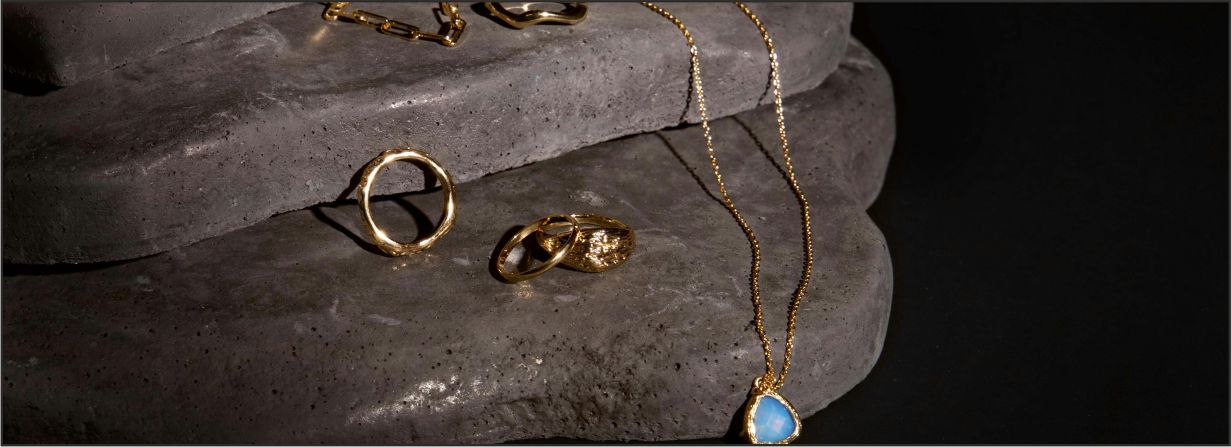The world of fine jewellery has long been synonymous with luxury, exclusivity, and opulence. From dazzling diamonds to radiant gold, these treasures have captivated humanity for centuries. However, the traditional jewellery industry has often been criticized for its environmental and ethical impact, from unethical mining practices to excessive carbon footprints. As consumers become more conscious of sustainability, a new question arises: Can luxury and eco-friendliness truly coexist in the world of jewellery?
The Environmental and Ethical Dilemma
Traditional jewellery production has significant environmental and social implications. Mining for precious metals and gemstones often leads to deforestation, soil erosion, and water pollution. The process also consumes vast amounts of energy, with gold mining alone contributing to greenhouse gas emissions through the extraction and refinement process. Additionally, concerns over unethical labor practices, including child labor and unsafe working conditions in certain regions, have long plagued the industry.
The rise of sustainability-conscious consumers has pushed the jewellery sector to rethink its practices. Ethical sourcing, transparency, and environmentally friendly alternatives are now at the forefront of discussions. But is it possible to maintain the essence of luxury while embracing sustainability?
Ethical Sourcing: The Heart of Sustainable Jewellery
One of the key shifts in the jewellery industry is the emphasis on ethical sourcing. Brands that commit to sustainability ensure that their materials come from conflict-free zones, adhering to fair trade practices. The Kimberley Process, established to prevent the trade of conflict diamonds, is one such initiative that has helped regulate ethical sourcing. However, some argue that this certification is not foolproof, as diamonds from unethical sources can still infiltrate the market.
To address this, many luxury brands are turning to blockchain technology to track the journey of gemstones and metals, ensuring complete transparency. Companies like De Beers and Everledger use blockchain to create a digital ledger that verifies the ethical sourcing of diamonds, allowing consumers to trace the origins of their jewellery.
The Rise of Lab-Grown Diamonds
One of the most significant innovations in sustainable jewellery is the rise of lab-grown diamonds. These diamonds are chemically, physically, and optically identical to natural diamonds but are created in controlled environments rather than mined from the earth. The process drastically reduces the environmental impact, eliminating the need for extensive mining and reducing carbon emissions.
Luxury brands that once shunned lab-grown diamonds are now embracing them as a sustainable alternative. Designers like Pandora and Brilliant Earth have introduced collections featuring lab-grown diamonds, highlighting their ethical and eco-friendly appeal. The challenge remains in consumer perception—while younger buyers are more open to lab-created stones, traditionalists still view natural diamonds as superior in value and prestige.
Recycled Metals: Reducing the Industry’s Carbon Footprint
Sustainable jewellery is not limited to gemstones. The use of recycled precious metals has gained traction as a way to minimize mining’s ecological impact. Recycled gold, silver, and platinum are extracted from old jewellery, electronic waste, and industrial byproducts, refined to their purest form, and repurposed into new pieces.
Brands like Chopard and Tiffany & Co. have committed to using recycled gold in their collections, ensuring that luxury does not come at the expense of environmental degradation. The process of refining recycled metals consumes significantly less energy than traditional mining, making it an attractive option for sustainable luxury jewellery.
Slow Fashion Meets Jewellery: The End of Mass Production?
The sustainability movement has also led to a shift in consumer preferences, favoring quality over quantity. Fast fashion has long been criticized for its wasteful nature, and the jewellery industry is experiencing a similar reckoning. Consumers are gravitating towards timeless, high-quality pieces that can be cherished for a lifetime rather than mass-produced accessories that quickly lose their value.
Luxury brands are adapting to this change by focusing on artisanal craftsmanship, bespoke designs, and made-to-order pieces. By reducing overproduction and excess inventory, the industry can cut down on waste while maintaining exclusivity and prestige.
The Role of Conscious Consumers
Luxury and sustainability can only coexist if consumers demand ethical practices from brands. Modern buyers, particularly Millennials and Gen Z, are increasingly mindful of where their jewellery comes from. They prioritize brands that are transparent about their sourcing, environmentally responsible, and committed to fair labor practices.
As consumer awareness grows, brands that fail to adopt sustainable practices risk losing their relevance. Companies that were once built on exclusivity and tradition are now being held accountable for their impact on the planet. The shift towards sustainability is no longer a niche movement but a necessity for the future of the industry.
A Luxurious Future That’s Kind to the Planet
The evolution of sustainable jewellery proves that luxury and eco-friendliness are not mutually exclusive. Ethical sourcing, lab-grown diamonds, recycled metals, and responsible craftsmanship are paving the way for a more sustainable future in the jewellery industry. While challenges remain—such as changing consumer perceptions and ensuring complete supply chain transparency—the industry is undeniably moving in the right direction.
Luxury has always been about exclusivity, craftsmanship, and enduring value. As sustainability becomes a defining aspect of modern luxury, the jewellery industry has the opportunity to redefine opulence—not just as something rare and beautiful, but as something ethical and responsible. By embracing sustainability, the industry can ensure that its brilliance continues to shine, not just for those who wear it today but for generations to come.
Read More Blogs: Click Here

